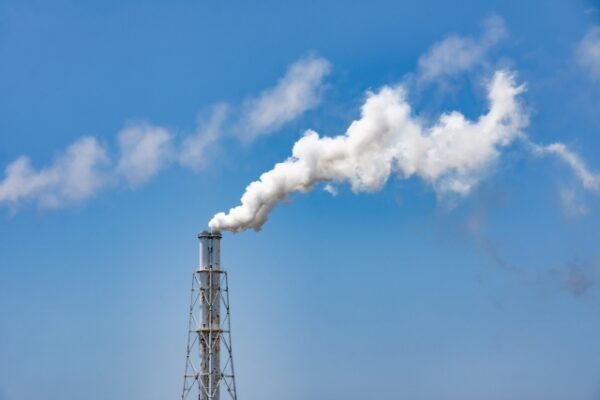In the midst of talks to take place on decarbonization at COP27, new coal-fired power plants are starting operation in Japan.
Misumi Power Station Unit 2: Trial operation began on March 23, 2022 and commercial operation on November 1, 2022.
Chugoku Electric Power started commercial operation of the Misumi Power Station Unit 2 on November 1, 2022. This unit has a capacity of 1,000 MW with ultra-supercritical technology (USC). Unit 2 was also planned when Unit 1 (1,000 MW) started operation in 1998. However, due to the slowdown in the growth of electricity demand and the need to respond to the realization of a low-carbon society, Chugoku Electric Power requested to postpone the start of construction of Unit 2 (originally planned in 2001) and the start of operation (also in 2004) three times in total. In the meantime, the unit’s output was also changed, once from the planned 700 MW to 400 MW, and then later increased to 1,000 MW in 2015 by positioning Unit 2 as a replacement for aged existing power plants. Additionally, its development period was accelerated, and construction began in 2018. As a result, Unit 2 started trial operation in March 2022, and commercial operation in November the same year.
Since the early planning stages of the Misumi project in 1982, electricity demand and Japan’s energy situation have changed drastically. Despite the Japanese government’s 2020 target to reduce greenhouse gas emissions by 25% from 1990 levels, plans to build a 1,000 MW coal-fired power plant have gone ahead. The environmental impact assessment (EIA) was conducted for the conditions and specifications originally planned for in 1982, but even after the plan was changed, Unit 2’s EIA was conducted from the Scoping Document. This means that the EIA skipped implementing the procedures for the Document on Primary Environmental Impact Consideration, starting at the second step of the process. In the third step in 2018, the Draft Environmental Impact Statement, the Minister of Environment expressed the view that the project should not be accepted unless concrete, effective measures to reduce carbon dioxide (CO2) emissions are provided.
Chugoku Electric Power proposes that Unit 2 can reduce carbon dioxide (CO2) emissions by about 500,000 tons per year by co-firing about 10% (on a calorific value basis) of woody biomass. However, in reality, two large-scale USC coal-fired power plants with a combined output of 2,000 MW will be in operation. Assuming an annual capacity factor rate of 80%, it will emit a maximum of approximately 11.13 million tons of greenhouse gases. Compared to such a substantial amount, a reduction of 500,000 tons means very little.
Although Chugoku Electric Power insists Misumi Power Station is positioned as a “replacement for an aged existing power plant”, there are currently no plans to shut down any of the existing power plants. Additionally, even though the company says it is going to retire inefficient coal-fired power plants, it has yet to indicate any sort of concrete plan.
Saijo Power Station Unit 1: Ignition on November 1, planned to begin operation in June 2023
On November 1, 2022, Shikoku Electric Power announced the ignition of Saijo Power Station Unit 1. This unit, a replacement of the old Unit 1 with 156 MW, has been upscaled to 500 MW. Its construction began in June 2019, and trial operation will start in December 2022, with commercial operation planned for late June 2023. This replacement project is attempting to achieve “higher efficiency”, but the CO2 emissions of the new Unit 1 will be higher than the old unit due to its larger generation capacity.
Within Shikoku Electric Power’s service area, a so-called “100% renewable energy” situation has developed, in which, depending on the time of year, the electricity consumption of the service area is entirely covered by electricity generated by renewable energy. It can therefore be said that, rather than building new large-scale coal-fired power plants, a flexible power system based on energy conservation and renewable energy is needed instead.
Future plans regarding coal-fired power plants
Currently, there are 5 coal-fired power units under construction or planned.
| Name | Capacity | Operating Company | Status and plan |
| Yokosuka New Unit 1 | 650MW | JERA | Trial operation |
| Yokosuka New Unit 2 | 650MW | JERA | Planned to start operation in 2024 |
| Kobe Power Station Unit 4 | 650MW | Kobelco Power Kobe-2 | Ignition in May 2022
Planned to start operation from late July 2023 |
| Saijo Power Station Unit 1 | 500MW | Shikoku Electric Power | Ignition in November 2022
Planned to start operation late June 2023 |
| GENESIS Matsushima | 500MW | J-Power | Under EIA
Planned to start operation in 2026 |
In its joint statement at this year’s G7 Summit, Japan committed to predominantly decarbonizing its power sector by 2035, and accelerating the phase-out of coal-fired power generation. Nevertheless, the country has not moved forward with the phase-out of existing inefficient coal-fired power plants, nor has it even laid out a concrete plan for doing so, as it continues to begin operation of one coal-fired power plant after another.
To achieve the 1.5°C target, developed countries must phase out coal-fired power plants by 2030, and the time left for Japan is dwindling by the minute. Even if the emissions from new units are less than that of existing (old type) power plants, there is no way that the international community would approve the operation of new coal-fired power plants such as Misumi Unit 2 and Saijo Unit 1, or any other new units without taking significant emission reduction measures. Japan should not begin operation of new plants and must accelerate the retirement of old plants.

